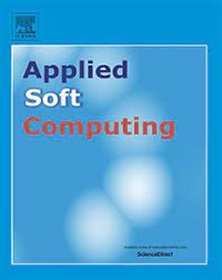Hyperspectral image classification based on ConvGRU and spectral–spatial joint attention
IF 7.2
1区 计算机科学
Q1 COMPUTER SCIENCE, ARTIFICIAL INTELLIGENCE
引用次数: 0
Abstract
In hyperspectral image classification, methods based on spectral–spatial joint attention mechanisms have demonstrated the ability to effectively enhance feature extraction. However, existing approaches still face limitations: spectral attention mechanisms often lack local–global feature interaction, spatial attention fails to fully exploit multi-scale information, and the joint modeling of spectral and spatial features remains insufficiently explored. To address these issues, this paper proposes a spectral–spatial joint attention network based on Convolutional Gated Recurrent Units (ConvGRU). First, a Local-Global Spectral Attention (LGSA) mechanism is designed, where one-dimensional convolution extracts local spectral features and fully connected layers enable global feature interaction. Second, a Multi-Scale Spatial Attention (MSSA) mechanism is introduced, employing three convolutional branches with different receptive fields to capture spatial features, followed by hierarchical feature fusion via 1 × 1 convolution. Finally, a channel-level feature fusion strategy based on ConvGRU is proposed, leveraging sequence modeling to achieve channel-wise joint enhancement of LGSA and MSSA, thereby enabling deep coupling of spectral and spatial features. Comparative experiments on three public datasets demonstrate that the proposed method outperforms seven state-of-the-art algorithms in terms of classification performance.
求助全文
约1分钟内获得全文
求助全文
来源期刊

Applied Soft Computing
工程技术-计算机:跨学科应用
CiteScore
15.80
自引率
6.90%
发文量
874
审稿时长
10.9 months
期刊介绍:
Applied Soft Computing is an international journal promoting an integrated view of soft computing to solve real life problems.The focus is to publish the highest quality research in application and convergence of the areas of Fuzzy Logic, Neural Networks, Evolutionary Computing, Rough Sets and other similar techniques to address real world complexities.
Applied Soft Computing is a rolling publication: articles are published as soon as the editor-in-chief has accepted them. Therefore, the web site will continuously be updated with new articles and the publication time will be short.
 求助内容:
求助内容: 应助结果提醒方式:
应助结果提醒方式:


